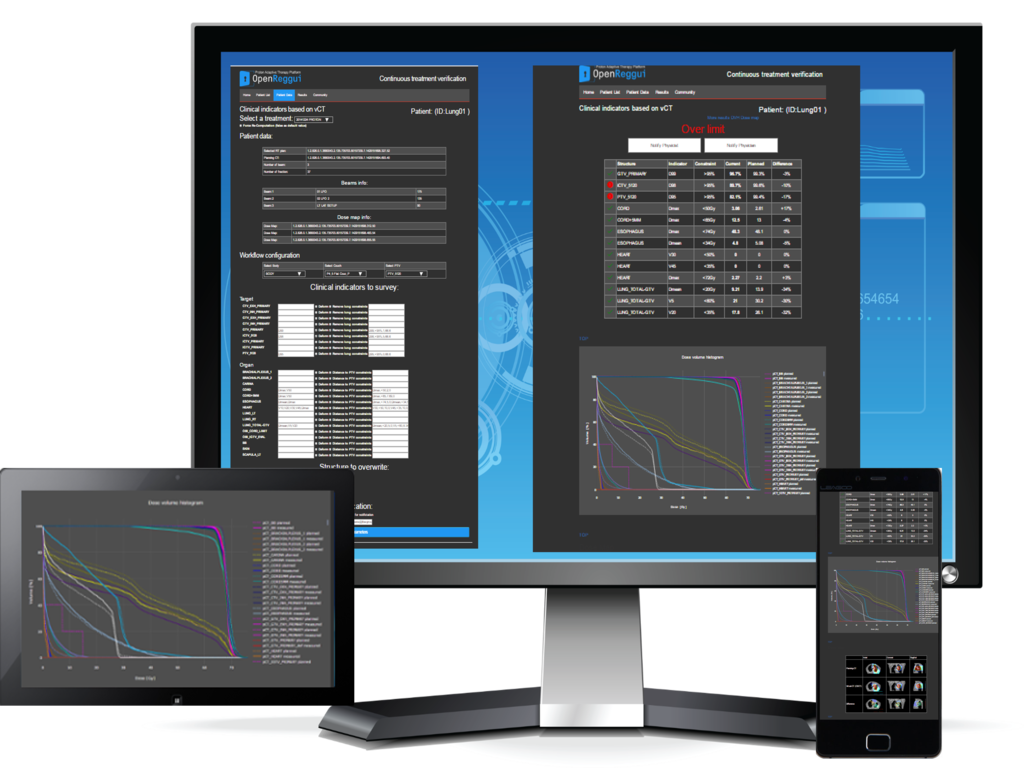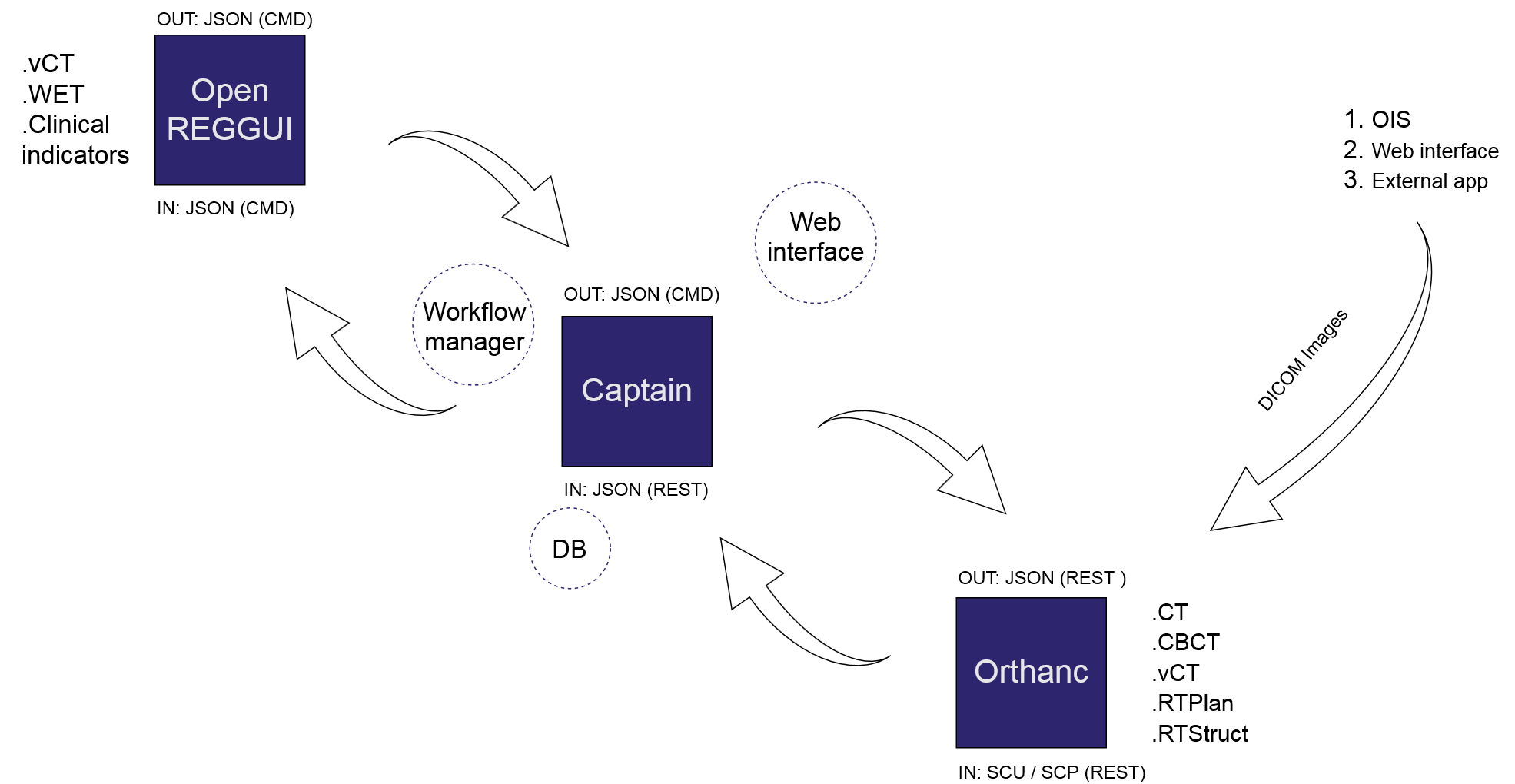
The Daily Plan Evaluation application quantitatively assesses WET and dose distributions using CBCT for proton therapy. The workflow provides clinical indicators similar to those for repeat CT on patients with considerable interfractional anatomic changes. The dose is recalculated on a virtual CT scan (vCT) computed by deforming the planning CT onto a cone beam CT acquired in the treatment room. A more accurate, offline, Monte Carlo dose recalculation can be performed as well to determine whether a rescan CT for replanning is required.
Target users:
Publications using the application
An image arriving on the Orthanc DICOM server, from an external source, automatically triggers a new evaluation. Having set the patient input parameters, clinical indicators constraints and flagging criteria using the web interface, when a daily CBCT gets pushed to Orthanc, the CAPTAIN workflow manager executes the computations in openREGGUI to update the indicators. The results are displayed in a web interface to help take a decision whether to adapt the treatment plan or not.

Orthanc